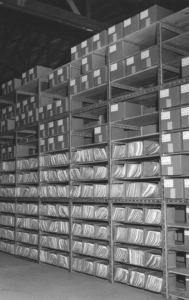
In the EFS-Web listserv, a practitioner posts this question:
We have decided to go paperless for the future and to destroy all of our archived paper files for the period since every application appears on the PTO PAIR Image File Wrapper. Does anyone know what date the PTO began imaging every application filed? I know for a while they were going back and imaging some files, but not all. I want to know after what date we can be confident that the image file wrapper is in PAIR.
In this blog post I will try to answer the “what date” question and I will offer a thought or two about how a practitioner might decide which files can be destroyed.
Continue reading “How to decide when to destroy an old patent file?”

 It will be recalled that on September 1, 2017 the search fee paid by US filers of PCT applications for the EPO searching authority increased from $1992 to $2099. Now it has been announced that on December 1, 2017 this fee will increase again, this time to $2238.
It will be recalled that on September 1, 2017 the search fee paid by US filers of PCT applications for the EPO searching authority increased from $1992 to $2099. Now it has been announced that on December 1, 2017 this fee will increase again, this time to $2238.  It will be recalled that recently the USPTO announced that it will change the way that electronic certified copies of priority documents are transmitted between the USPTO and the Japanese Patent Office. The change takes effect today. Among other things, this will affect how you complete your Application Data Sheet to present a priority claim to a Japanese patent application.
It will be recalled that recently the USPTO announced that it will change the way that electronic certified copies of priority documents are transmitted between the USPTO and the Japanese Patent Office. The change takes effect today. Among other things, this will affect how you complete your Application Data Sheet to present a priority claim to a Japanese patent application.